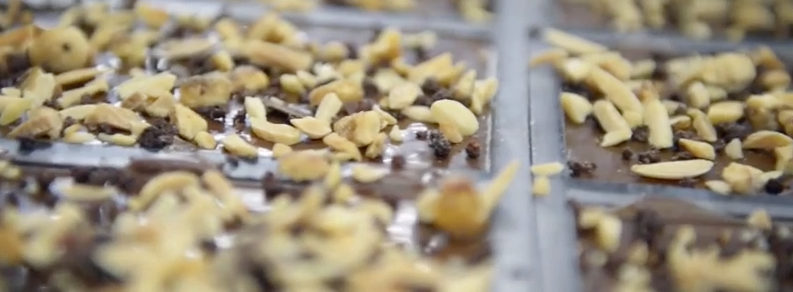
Bean-to-Bar Chocolate Part ll
Last time we discussed the stages in bean-to-bar creation, from cacao pod harvesting, fermentation and drying of the cocoa beans; all of which are important in setting up the foundation for great flavors in the finished product. But how exactly do cocoa beans get turned into chocolate?
Once cocoa beans arrive at Michel Cluizel there are several more critical steps that are needed to become the chocolate we all love.
First, the beans need to be sorted to remove cracked or moldy beans as well as debris like rocks! Even the highest quality beans may arrive with non-edible items mixed in.
Second, the beans get roasted, which can be anywhere from light to dark roast to bring out both the desired flavor profile and the perfect roasting point for each individual origin. (Sound familiar coffee lovers?).
Third, the outer husk of the beans needs to be removed by cracking the husks to release the inside nibs (the part that gets ground into chocolate) and also makes the act of removing the husks easier. This is followed by a process called winnowing, in which the cracked husk pieces are completely removed from the pile of nibs.
Fourth, it is time to grind and refine the nibs. Since the beans contain around 50% cocoa butter, the grinding acts to heat up and release the cocoa butter from the nibs allowing the chocolate to turn into a liquid state. During this stage, the nibs are refined to bring about a smoother texture.


Fifth, on to conching. During this step, the chocolate is mixed/ground by a melanger with two stone or metal wheels rotating for several hours depending on the chocolate makers desired texture and flavor outcome. This is also the time that oxidation allows for some undesirable, harsher (often referred to as volatile) flavors to dissipate. Sugar is added in at this point.
Sixth, before the chocolate can be made into chocolate bars or bonbons it needs to be tempered correctly. This gives the bar a shiny look and that "snap" sensation you feel when you bite into chocolate. Tempering also makes chocolate more shelf stable. When chocolate cools various crystals in the cocoa butter portion (referred to as crystals I through VI) can form. Tempering is about heating the chocolate to a point (to get rid of the formed crystal structure), bringing the temperature back down and then back up again a bit to cause crystal V to form which is the sweet spot for texture, shine and snap. Luckily, if when tested, the tempering isn't just right, the chocolate may be remelted and re-tempered. Once the chocolate is tempered it is time to pour into molds. Correct tempering also lets bars and bonbons release easily and correctly from the molds. At this point, the chocolate in the molds also needs to be cooled in the correct way to maintain the crystal structure formed during tempering in order to the insure proper look of the finished product. (Depending on the chocolate maker, sometimes chocolate is aged in its un-tempered form first to allow for different flavor development and then is tempered).

Seventh, it's time to wrap the bars. Just when you think the bars are safe, they still must be stored at correct temperatures and in low moisture environments. Drastic changes in temperature and humidity levels change the look and texture of chocolate.

Eighth, perhaps the best step of all. Finally, we can eat the chocolate!

Lori
So glad to read another great article about your chocolate and how it gets from the bean to the bar. I didn’t think I could appreciate chocolate any more than I do already, but learning what it takes to actually enjoy that end product does make it an evan greater treasure.